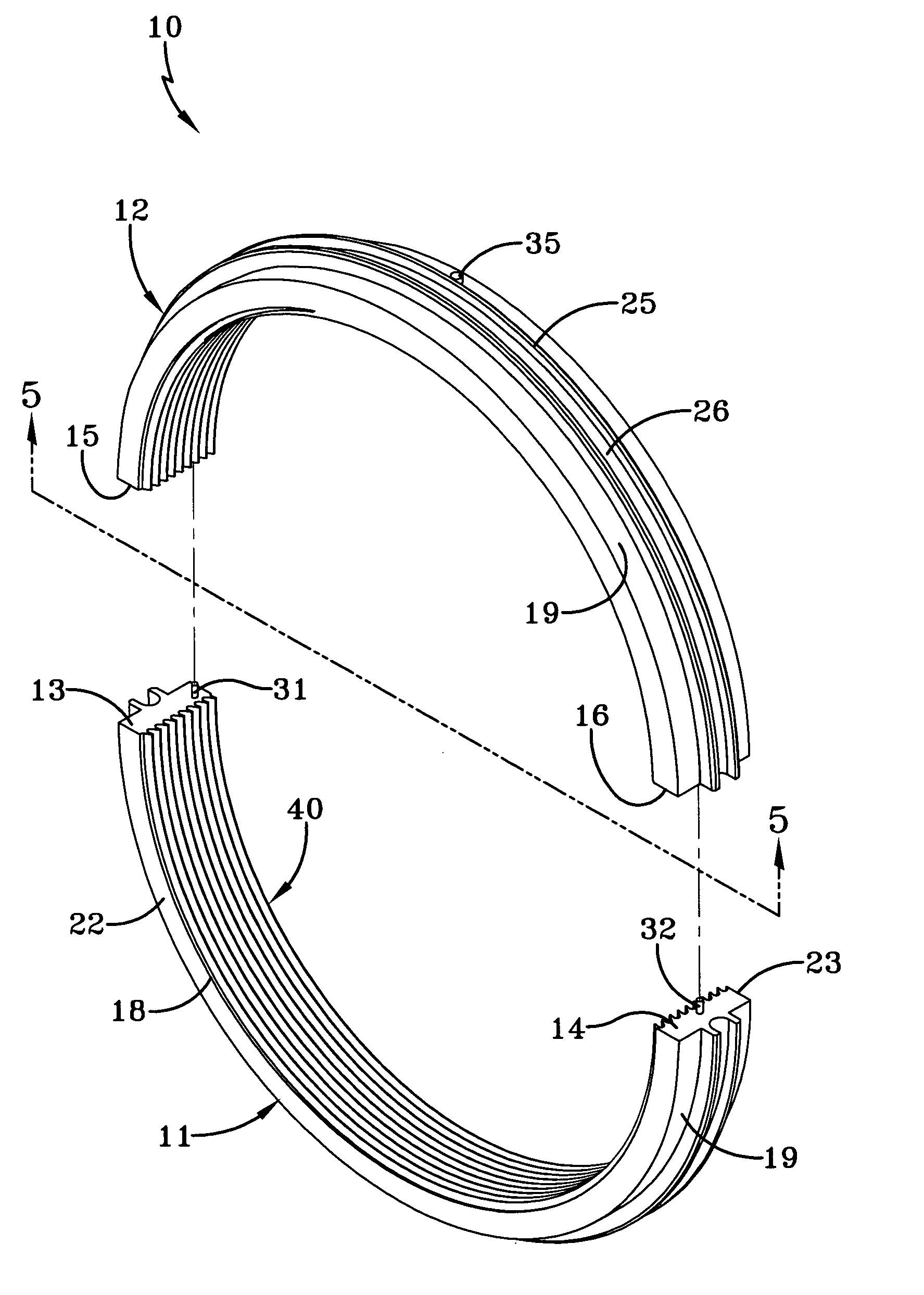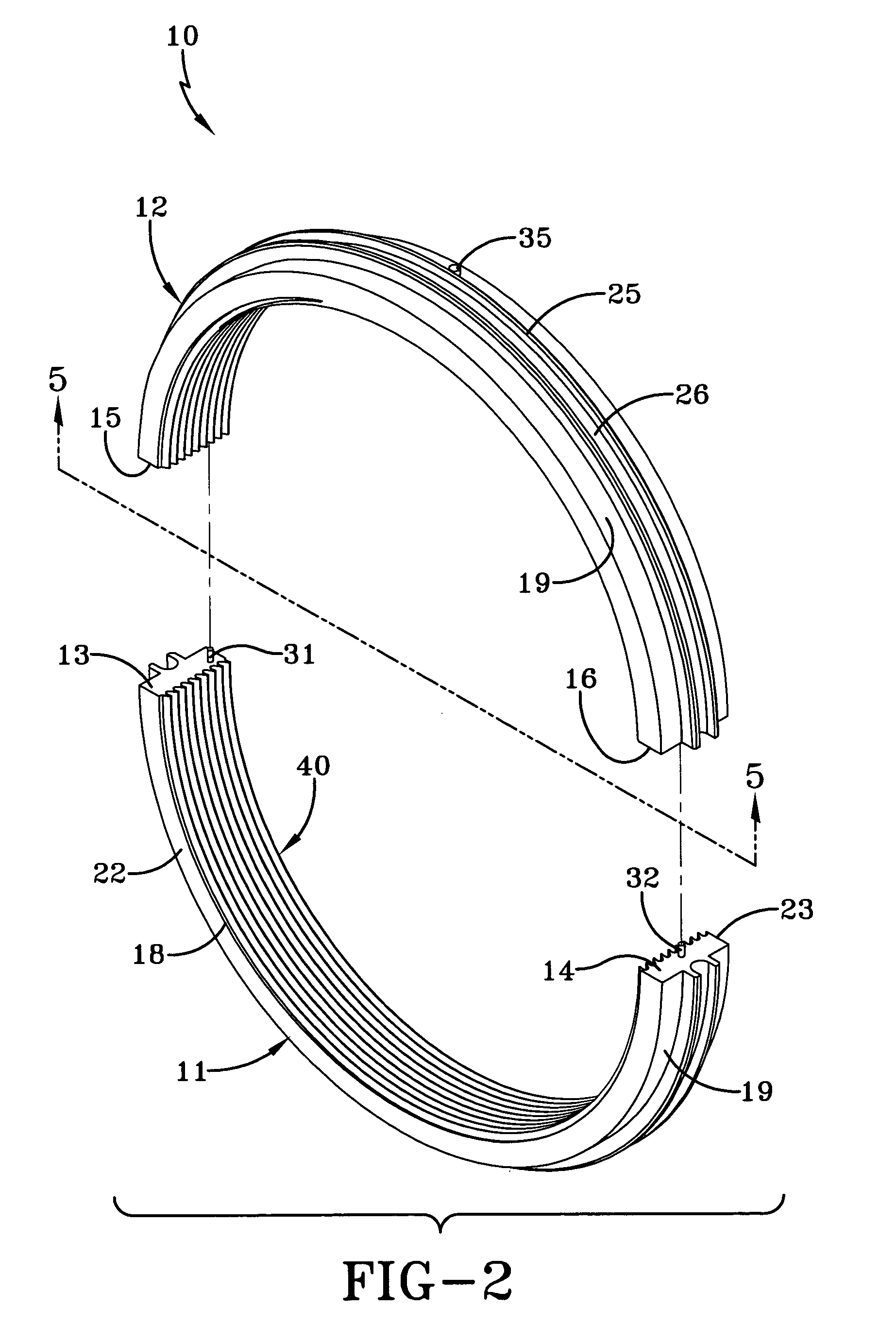Windback labyrinth seal that accommodates a pressure differential for rotating shafts
a technology of labyrinth seal and rotating shaft, which is applied in the direction of engine seals, leakage prevention, machines/engines, etc., can solve the problems that the labyrinth seal cannot maintain a significant pressure drop between the interior and exterior of the bearing housing, and contravene their very purpose, so as to prevent oil leakage, prevent pressure drop, and prevent oil leakage
- Summary
- Abstract
- Description
- Claims
- Application Information
AI Technical Summary
Benefits of technology
Problems solved by technology
Method used
Image
Examples
Embodiment Construction
[0018]Referring first to FIG. 1, the segmented labyrinth seal of the present invention is generally indicated by the numeral 10. The segmented labyrinth seal 10 can be constructed of Xiton, or other similar material and is made up of first and second half circle-shaped segments 11 and 12. As seen in FIG. 2, the first segment 11 has first and second ends 13 and 14, respectively, and the second segment 12 has first and second ends 15 and 16, respectively. First ends 13 and 15 abut one another, and the second ends 14 and 16 abut one another when the segmented labyrinth seal 10 is assembled along a split-line 17 as best seen in FIGS. 3 and 4. The split-line 17 delineates the portions of the segmented labyrinth seal 10 housed in the first half and second half of a bearing housing (not shown). As such, the first segment 11 will be housed (or encapsulated) in the first half of the bearing housing and the second segment 12 will be housed in the second half of the bearing housing.
[0019]When ...
PUM
 Login to View More
Login to View More Abstract
Description
Claims
Application Information
 Login to View More
Login to View More - R&D
- Intellectual Property
- Life Sciences
- Materials
- Tech Scout
- Unparalleled Data Quality
- Higher Quality Content
- 60% Fewer Hallucinations
Browse by: Latest US Patents, China's latest patents, Technical Efficacy Thesaurus, Application Domain, Technology Topic, Popular Technical Reports.
© 2025 PatSnap. All rights reserved.Legal|Privacy policy|Modern Slavery Act Transparency Statement|Sitemap|About US| Contact US: help@patsnap.com



